31 January 2025
![]() 9 mins Read
9 mins Read

As the land girt by sea, it’s no surprise that Australia is home to over 8000 islands, most of them boasting luxe lodgings, cute cafes and an abundance of Aussie wildlife. But with so many islands to choose from, picking where to start your next adventure can feel like an almost impossible task.
Don’t worry though, we’ve hit the ground running to do the research for you. From WA’s quokka-filled Rottnest Island and Magnetic Island in Queensland to Tassie‘s generous sprinkling of rugged islets and SA getaways like Kangaroo Island, these are the ones worthy of your bucket list.
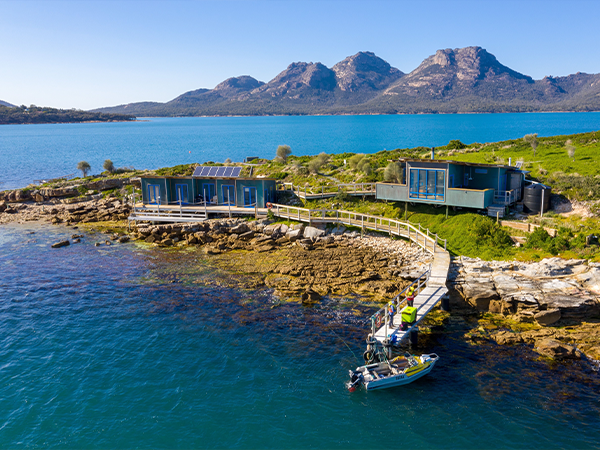
Picnic Island sits in Tasmania’s magnificent Coles Bay.
Accessible only by boat, Picnic Island sits in Coles Bay within Tassie’s ruggedly beautiful Freycinet National Park. Owner Clem Newton-Brown originally used the island for rugged camping trips with his family, but it now boasts two weathered, copper-clad structures.
The buildings are connected by a boardwalk: one contains five bedrooms, sleeping up to 10 people, while the other features a kitchen, dining and living space complete with suspended fireplace and views over the bay. Dolphins can be spotted passing by, and a walk around the island after dark reveals scores of fairy penguins returning to their burrows. Guests can also enjoy fishing, swimming and foraging for mussels at low tide.
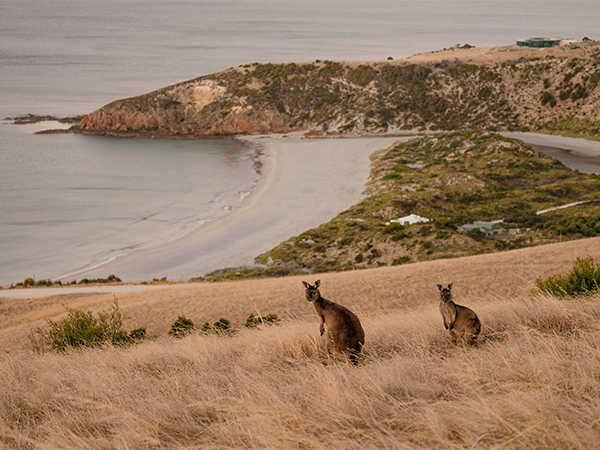
Wildlife is at its best on Kangaroo Island. (Image: Tourism Australia)
Take a short break (and make a big difference) on Kangaroo Island in South Australia. In summer, Hamilton Dune is the place to be. A duo of private-hire lodges overlooking picturesque Emu Bay, guests can choose between architecturally designed Dune House and the larger Hamilton House. Or book into the recently refurbished Southern Ocean Lodge for a taste of true luxury.
While on the island, visitors can take guided tours, spot native wildlife and sample hyperlocal produce at Emu Bay Lavender Farm. Dreaming of a dive with dolphins? Look no further than Kangaroo Island Marine Adventures, where you can expect to swim with anywhere between 20 to 50 wild dolphins at a time. For lovers of gin, Kangaroo Island Distillery is also a must.

Escape to the west coast of K’gari. (Image: Tourism and Events Queensland/ Kyle Hunter)
Some 500,000 visitors arrive on Queensland’s K’gari each year and Wayne, an easygoing larrikin who doubles as driver and guide at K’gari Explorer Tours, estimates 499,000 of them stop at Lake McKenzie. And as easy as it would be to spend the whole day there, this island offers so much more. Think wild swimming, whale watching, 4WD tours, shipwreck snorkelling, guided walks and more.
When it comes to settling in for the night, many visitors opt the luxurious Kingfisher Bay Resort. The stunning eco-driven accommodation is the perfect place to stay and play thanks to its day spa, guided activities and variety of restaurants. While here, be sure to take a Bush Tucker Talk & Taste tour to learn about the island’s native ingredients. K’Gari Beach Resort on the island’s east coast is also a great budget-friendly option.
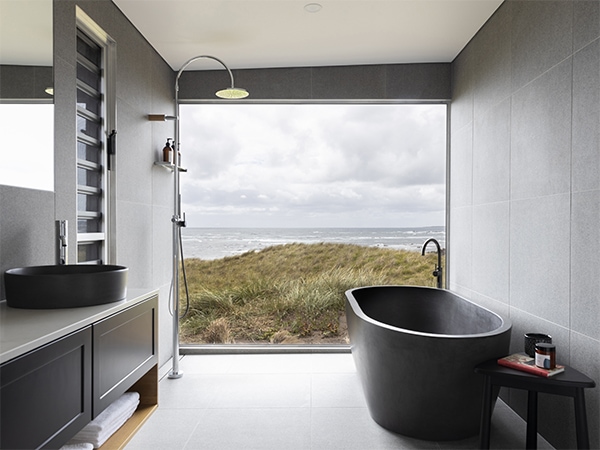
Enjoy sweeping views across the Bass Strait from every room at Kittawa Lodge.
King Island lies off the beautiful and craggy coastline of Tasmania’s north-west. Home to some of the cleanest air in the world, its no wonder the owners of Kittawa Lodge decided to set up shop. Dreamt up to be a place where busy people can unwind and breathe deeply, its two luxury cabins sit snug against the property’s rugged wilds.
With sweeping views across the Bass Strait from every room, both lodges are designed to maximise guests’ connection to the outdoors. Inside, luxurious linens, a handmade concrete bath and original paintings by local artists deepen its sense of place. No Tassie experience would be complete without lashings of local produce either, and King Island certainly delivers.
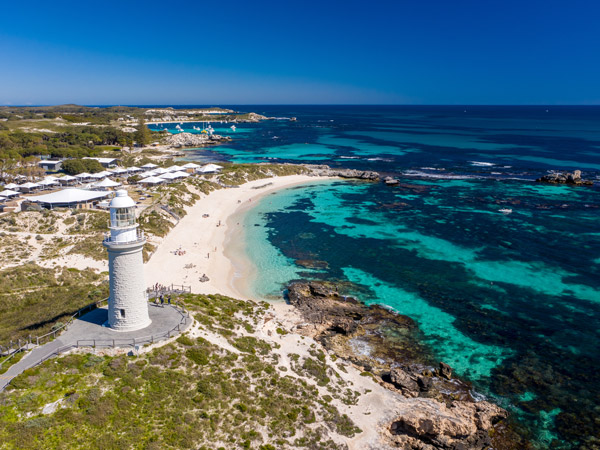
Rottnest Island is a water lover’s paradise. (Image: Tourism Western Australia)
Jump on a ferry from Perth to explore this pristine playground – just be sure to tread lightly. Rottnest Island has long been WA’s holiday destination of choice thanks to its timeless, slow-paced charm. It is also recognised as one of the country’s best-managed ecotourism environments. The island and all its plants and critters are protected by law, including the incredibly friendly quokka – just be sure to follow the guidelines that keep them safe.
With a no-car policy, Rottnest is an ideal place to explore by bike. There are 45 kilometres of walking trails, too, which take in the island’s many beautiful beaches. Alternatively, take a Segway tour to hard-to-reach corners of the island. Stay overnight at Samphire Rottnest to soak up the serenity after the daytime crowds have gone home.
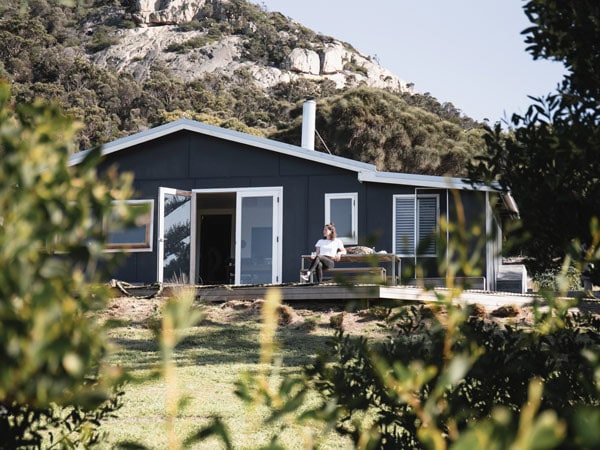
The ocean beckons for guests at the Crayshack on Flinders Island. (Image: Liam Neal)
Flinders Island is the largest in the Furneaux Group, a collection of islands sitting pretty in the Bass Strait. Renowned for its pristine and wild waters harbouring some of Australia’s best seafood, it’s long been a chef’s secret pantry. The island’s resident farmers, growers and producers are passionate about its local ingredients; be sure to get a taste down at The Flinders Wharf.
Providing another reason to visit – and stay awhile, The Flinders Wharf also manages three chic and cosy farm stays on the Quoin Farm. Dwarf Cottage is a gorgeous studio space perfect for couples; family-friendly Crayshack sits right on Killiecrankie Beach; and the three-bedroom Wombat Lodge boasts a tub overlooking the mountains. Take your pick!

The Abrolhos Islands are an adventurer’s dream. (Image: Chris Gordon)
Sitting 70 kilometres off Western Australia lies an island smaller than a footy oval. Basile Island is just one stop on Eco Abrolhos’ five-day exploratory cruise of the Abrolhos Islands, and its 32-person catamaran is the only tourism vessel permitted to stop there. Few people even know this remote archipelago of 122 islands exists, making it the perfect getaway for thrill-seekers after a bit of peace and quiet.
Snorkel over coral gardens in glass-blue water. Dive at the historic Batavia shipwreck. Go crayfishing and lobster-catching. Learn about the local pearl farm industry. And after all that, head back to the mainland to visit the Museum of Geraldton, where you can learn more about the magical place you just explored.
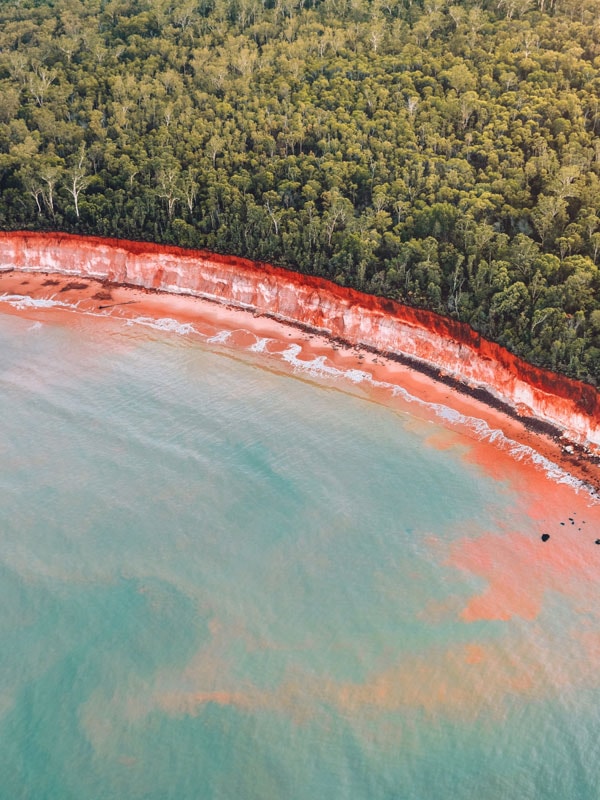
The Tiwi Islands is a far-flung northern sanctuary where art flourishes. (Image: Tourism NT)
Travel across the water from Darwin in a tiny prop plane to soak in the ancient and abundant culture of the Tiwi Islands. Home to plentiful tropical rainforests, clay-like cliffs and white-sand beaches, its landscapes will leave an indeliable mark on your heart. This top-notch topography is matched in magnificence by the island’s many Indigenous artists, who you can meet on guided art tours.
The Tiwi’s strong cultural pulse can be felt across its two main islands, Bathurst and Melville, where you can experience First Nations language, culture, dance, song and storytelling. Nine smaller, uninhabited islands make up the rest of this rich community in the Timor Sea.
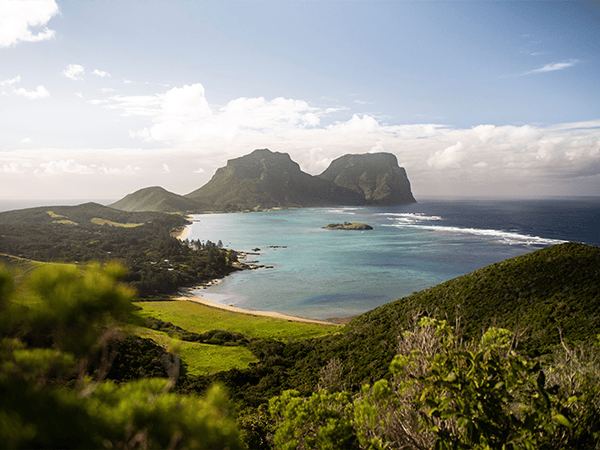
Order a picnic from Love Lord Howe and sit back to enjoy the stunning views. (Image: Destination NSW)
While technically classified as part of NSW, the World Heritage listed Lord Howe Island has an identity all of its own. The remnant of a volcano that was active more than two million years ago, this tiny paradise in the Tasman Sea needs to be on your bucket list.
Lord Howe is characterised by its knockout beaches, all-year-round good weather and abundance of subtropical forests, all surveyed by the impressive Mt Gower – rated one of Australia’s best day walks. Don’t miss the I-never-want-to-leave luxury of Capella Lodge, home to one of Australia’s best infinity pools.
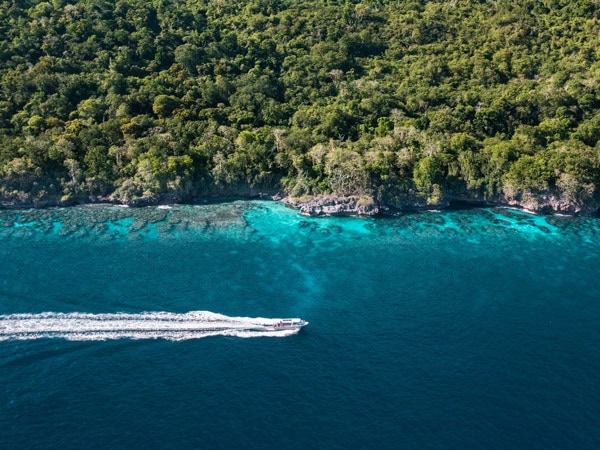
Christmas Island is a secluded gem in the Indian Ocean. (Image: Christmas Island Tourism Association)
Located in the Indian Ocean 2600 kilometres north-west of Perth, Christmas Island is unlike anywhere you’ve ever visited before. It’s a true secluded paradise where tropical jungle meets turquoise water, offering way more than the headlines would lead you to believe.
Come for the huge red-crab migration made famous by Sir David Attenborough, one of the largest animal migrations on the planet. Stay for (or rather, at) luxury eco retreat Swell Lodge, where all funds go to the island’s incredible conservation efforts. Fill your days with secret swimming spots, snorkelling, hiking, fishing and a melting pot of unique cultural experiences.
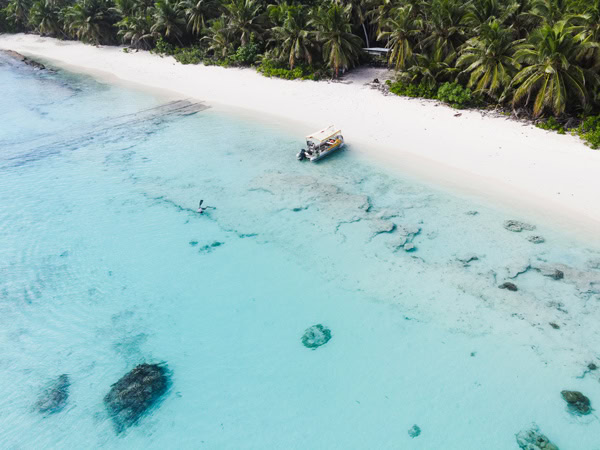
Boat tours explore outer islands and reefs. (Image: Cocos Keeling Tourism/Rachel Claire)
Like Christmas Island, the Cocos Keeling Islands is another external Australian territory, minding its own business in the vast Indian Ocean. About halfway between Perth and Sri Lanka, this tranquil and unspoilt atoll is home to a rich culture and heritage that dates back centuries.
A visit to this little slice of paradise is a must for those craving a tropical escape. With 27 coral islands, visitors are encouraged to spend their days boat-hopping from one beach to the next. Only two of the tiny landmasses – West Island and Home Island – are inhabited and there are no shopping centres, restaurant chains or crowded beaches, making it the perfect place to recharge.
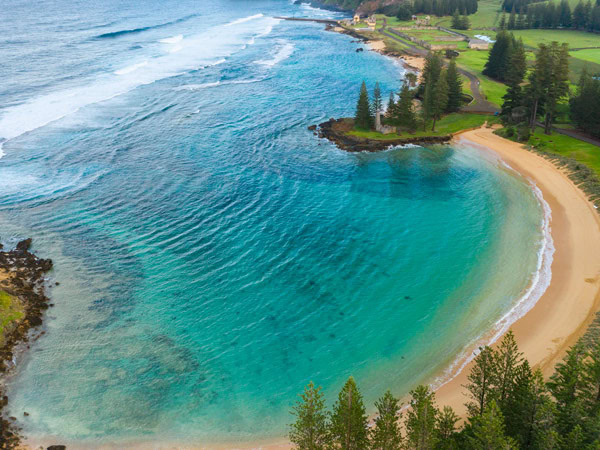
The locals in Norfolk are extremely welcoming. (Image: Norfolk Island Tourism)
Resting quietly between New Zealand and New Caledonia, Norfolk Island is – geographically speaking – a very isolated place. But this sublime speck in the South Pacific Ocean is home to a vibrant and thriving community that welcomes its visitors with open arms.
Its subtropical landscape of rolling plains and pine forests dance in time with sparkling bays and world-class dive sites. In particular, Emily Bay is known among locals as an aquatic mecca, with seals and turtles spotted frequently. Harnessing the abundance of homegrown produce, from fresh fish to honey and cheese, Norfolk also boasts an immaculate paddock-to-plate philosophy – stop by Bailey’s to sample the goods.
LEAVE YOUR COMMENT